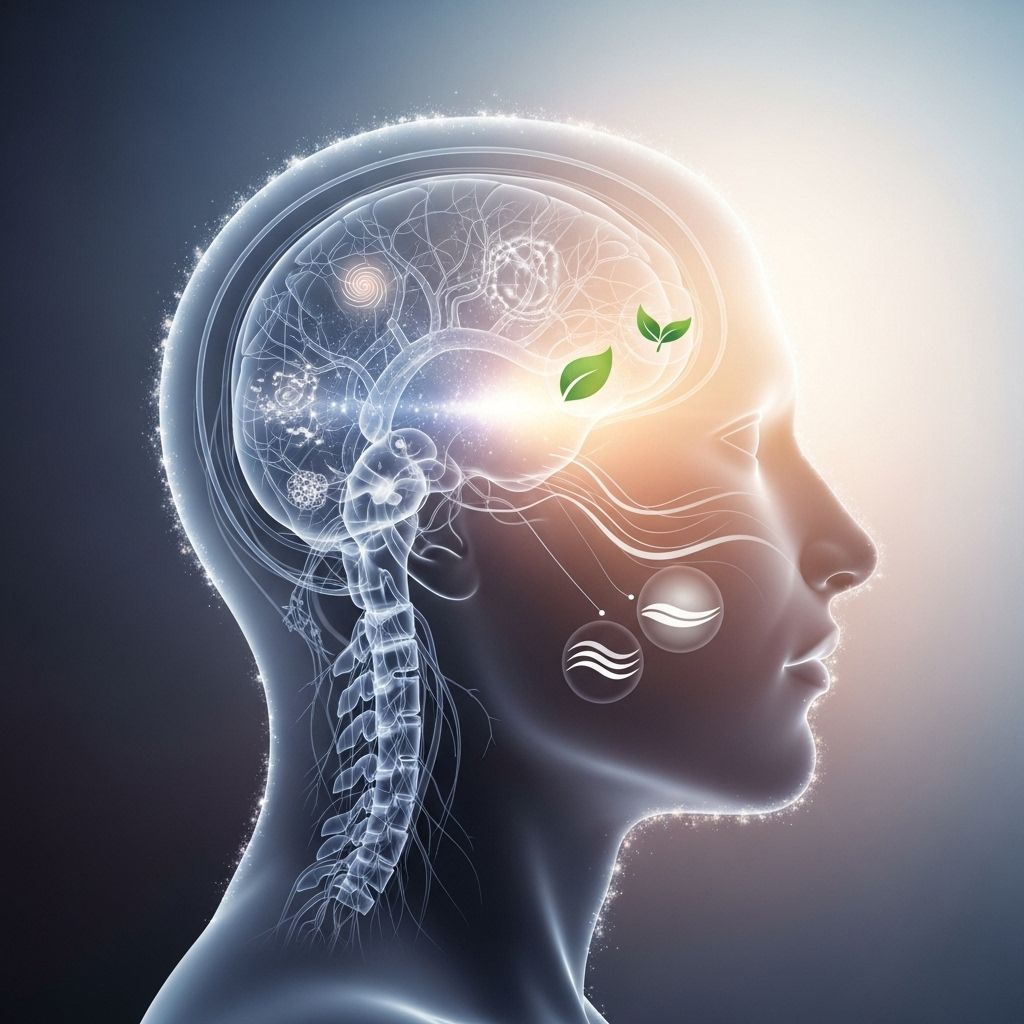Migraine Causes and Cures: Understanding Triggers, Prevention, and Relief
Habit tracking can reveal your headache triggers, improving how you manage symptoms.

Migraines are complex neurological conditions that affect millions worldwide, causing severe headaches, sensitivity to light and sound, and a range of other debilitating symptoms. Understanding the root causes, triggers, and cures of migraine is essential for anyone seeking relief. This in-depth guide explores the science behind migraines, uncovers common triggers, and discusses both lifestyle and medical solutions for effective prevention and relief.
What Is a Migraine?
A migraine is not just an ordinary headache. It is a neurological disorder characterized by recurring attacks of moderate to severe headache, often accompanied by nausea, vomiting, and heightened sensitivity to light, sound, or smell. Migraines can last hours or even days, interfering with work, social activities, and sleep. Some people experience warning symptoms known as aura before the headache phase begins.
Key symptoms include:
- Throbbing or pulsating pain, usually on one side of the head
- Nausea and/or vomiting
- Sensitivity to light (photophobia)
- Sensitivity to sound (phonophobia)
- Visual disturbances (aura), including flashes or blind spots
- Dizziness or light-headedness
The intensity and combination of symptoms vary widely for different individuals and even from attack to attack.
Root Causes: Why Do Migraines Happen?
Despite decades of research, the exact cause of migraines remains somewhat mysterious. What is known is that migraine is a result of complex changes within the brain involving nerve signals, blood flow, and brain chemicals (neurotransmitters). Genetics plays a significant role—people with a family history of migraine are much more likely to experience assaults.
Contributing factors include:
- Genetic predisposition: Family history increases risk.
- Neurovascular changes: Fluctuations in brain chemical levels initiate pain signalling.
- Hormonal shifts: Fluctuations in estrogen, such as those during menstruation, pregnancy or menopause, often trigger migraines in women.
- Environmental and lifestyle factors: From sleep patterns to diet, external and internal conditions can prompt attacks.
Ultimately, no single cause explains all migraines, and often multiple factors interact to produce an attack.
Major Migraine Triggers: What Sets Attacks in Motion
While the true cause of migraine remains elusive, extensive research highlights a long list of potential migraine triggers. These triggers don’t cause migraine, but they can set the stage for an attack if someone is genetically predisposed[11][14]. It often takes more than one trigger, combined with a person’s baseline vulnerability, to bring on symptoms.
How Triggers Work
A useful analogy for migraine triggers is a threshold or light switch: when enough triggers accumulate, the switch is flipped and the migraine process starts. What sets off a migraine on one day might not do so the next—the more triggers present, the greater the risk.
Common Migraine Triggers
| Trigger Category | Examples | How to Manage |
|---|---|---|
| Dietary | Red wine, aged cheese, processed meats, caffeine withdrawal, MSG, chocolate | Identify food-related triggers via a diary and moderate intake or avoid specific items |
| Physical | Dehydration, skipped meals, sleep loss, hormonal changes | Maintain hydration, eat regular balanced meals, prioritize sleep |
| Psychological/Emotional | Stress, anxiety, excitement | Practice stress management techniques, mindfulness, and relaxation |
| Environmental | Weather changes, strong odors, loud noises, bright/flickering lights | Limit exposure to triggers when possible, use sunglasses/sound protection |
| Medical | Certain medications, hormonal birth control, other health issues | Discuss alternatives with your doctor, manage health conditions proactively |
Multiple Triggers: Threshold Effect
It’s not unusual for more than a single trigger to be present before an attack. For example, missing a meal one day might be innocuous, but missing a meal and losing sleep increases the likelihood of a migraine episode.
How to Find and Avoid Your Personal Migraine Triggers
Tracking your migraine attacks and potential triggers is essential to reducing their frequency. Since triggers are unique to each individual, keeping a detailed record helps uncover patterns and empowers smarter prevention.
Strategies for trigger management:
- Use a diary, notebook, or migraine tracking app to record attacks and preceding events.
- Document meals, hydration, sleep, stress, environment, and medication changes.
- Review records monthly for emerging patterns (eg. attacks after wine, during stressful weeks, or after poor sleep).
- Work gradually to eliminate or minimize exposure to identified triggers.
- Understand that not all triggers are avoidable; focus on managing those within your control.
Preventing Migraine Attacks: Lifestyle and Behavioral Changes
Though you cannot change your genetics, healthy lifestyle modifications can make a significant difference in reducing the frequency and intensity of migraine attacks[13][14].
- Maintain routine: Try to keep regular sleep, meal, and exercise schedules.
- Stress reduction: Practice relaxation techniques (meditation, yoga, deep breathing) to lower baseline stress levels.
- Hydration: Drink water regularly—dehydration is a common, preventable trigger.
- Dietary moderation: Limit potential food triggers one at a time; avoid skipping meals.
- Exercise: Regular, moderate exercise can improve cardiovascular health and overall resilience, though care must be taken not to overexert.
- Sleep hygiene: Go to bed and wake up at the same time every day; keep your bedroom dark and cool.
- Avoid stimulants: Limit caffeine and alcohol, both of which can trigger migraines in susceptible individuals.
Medical Treatments: Relief and Prevention
For those who struggle with frequent or severe migraine attacks, medical treatments—including prescription medications and non-drug therapies—can help both in acute management and long-term prevention[11].
Acute Migraine Treatments
- Over-the-counter pain relievers: Ibuprofen, aspirin, or acetaminophen may help mild migraines.
- Triptans: These prescription drugs (sumatriptan, rizatriptan, etc.) specifically relieve migraine symptoms.
- Anti-nausea medication: Useful for attacks accompanied by severe nausea or vomiting.
Preventive Migraine Medications
- Beta blockers: Used for both hypertension and migraine prevention.
- Antidepressants: Tricyclics like amitriptyline may help reduce attack frequency.
- Anti-seizure drugs: Medications such as topiramate or valproate can stabilize nerve activity.
- CGRP inhibitors: New, targeted drugs that block calcitonin gene-related peptide implicated in migraine development.
Other Medical Approaches
- Botox injections: Approved for chronic migraine prevention in some cases.
- Neuromodulation devices: Electrical stimulation for nerve pain control.
- Natural supplements: Magnesium, riboflavin, and coenzyme Q10 have some evidence for reducing attack frequency in select people.
Always consult a qualified healthcare provider about new or ongoing symptoms, and never attempt to treat chronic or severe migraines without medical guidance.
Natural and Home Cures for Migraines
Alongside medication, many people use non-drug therapies to manage migraine. Some approaches may offer relief, especially for mild attacks or in combination with medical therapy:
- Cold packs: Applying a cold pack to the forehead or neck can numb pain and reduce inflammation.
- Rest in a dark, quiet room: Reduces sensory stimulation and helps the attack resolve faster.
- Adequate hydration: Sip water slowly throughout the attack.
- Herbal remedies: Some people use butterbur, feverfew, or essential oils (lavender) after consulting with a healthcare provider.
Though natural remedies may help, consistent and severe migraines often require formal medical evaluation and prescription treatment.[12]
Frequently Asked Questions About Migraine Causes and Prevention
Q: What are common migraine triggers to avoid?
A: Common triggers include red wine, caffeine withdrawal, stress, skipped meals, sleep loss, dehydration, certain foods, strong smells, and changes in weather. Other internal or external stimuli can also be triggers; keeping a personal diary is the best way to identify your own[14].
Q: How can I identify my specific migraine triggers?
A: Track your migraine attacks and record what happened before their onset, including meals, activities, emotional stress, sleep, medication, and weather. Patterns often emerge after several weeks of careful documentation[11][14].
Q: What lifestyle modifications can reduce the frequency of migraines?
A: Routine sleep, regular meals, hydration, stress reduction, and limiting stimulant use are foundational. Gentle exercise and relaxation techniques (meditation, yoga) also help many people[13][14].
Q: Can stress trigger a migraine?
A: Yes. Stress is one of the most commonly reported migraine triggers, and managing stress can often reduce attacks[14].
Q: Are some dietary factors responsible for migraines?
A: Certain foods or food additives (e.g., red wine, processed meats, aged cheese, MSG) can precipitate attacks in some individuals. However, dietary triggers vary widely, and food-related causes are less common than many believe. Elimination and observation are key[14].
Q: Can natural remedies or alternative therapies provide lasting relief?
A: Non-drug approaches—including hydration, cold compresses, herbal supplements, and acupuncture—may help some people, particularly with milder attacks. Consistent or severe migraines usually require medical management[12].
Key Takeaways: Migraine Management
- Migraines are complex neurological attacks, best managed by a combination of lifestyle changes and medical intervention.
- Triggers are varied and unique; tracking is essential for identifying the most impactful factors in your life.
- Prevention focuses on healthy routines, stress management, and avoiding identified triggers.
- Medical cures include both acute and preventive medications, while natural solutions may provide adjunct relief for select individuals.
Sources and Further Reading
- Cleveland Clinic: “Migraines,” “Migraine Headache Diary,” “Migraines: Specific Foods,” “Migraines: Exercise,” “Migraines: Stress”
- National Institute of Neurological Disorders and Stroke: “NINDS Migraine Information Page”
- American Migraine Foundation: “Top 10 Migraine Triggers and How to Deal With Them”, “Stress and Migraine”[14]
- Mount Sinai: “Migraine Information, Prevention, & Treatments”
- WebMD: “Tips for Avoiding Migraine Triggers”
- Mayo Clinic: “Migraine – Symptoms and causes”
Consult a healthcare provider for personalized diagnosis and treatment recommendations.
References
- https://my.clevelandclinic.org/health/diseases/5005-migraine-headaches
- https://www.mayoclinic.org/diseases-conditions/migraine-headache/symptoms-causes/syc-20360201
- https://www.mayoclinic.org/diseases-conditions/migraine-headache/diagnosis-treatment/drc-20360207
- https://www.nhs.uk/conditions/migraine/
- https://medlineplus.gov/ency/article/000709.htm
- https://www.mountsinai.org/care/pain-management/services/migraine
- https://www.ncbi.nlm.nih.gov/books/NBK328460/
- https://health.ucdavis.edu/blog/cultivating-health/migraine-causes-symptoms-treatments-and-more/2022/12
- https://www.webmd.com/migraines-headaches/avoiding-migraine-triggers
- https://www.webmd.com/migraines-headaches/migraines-headaches-migraines
- https://www.healthline.com/health/migraine
- https://www.cedars-sinai.org/blog/at-home-remedies-for-migraines.html
- https://americanmigrainefoundation.org/resource-library/migraine-prevention-101/
- https://americanmigrainefoundation.org/resource-library/top-10-migraine-triggers/
- https://www.medicinenet.com/migraine/article.htm
- https://www.migrainedisorders.org/migraine-disorders/migraine-triggers/
Read full bio of medha deb











